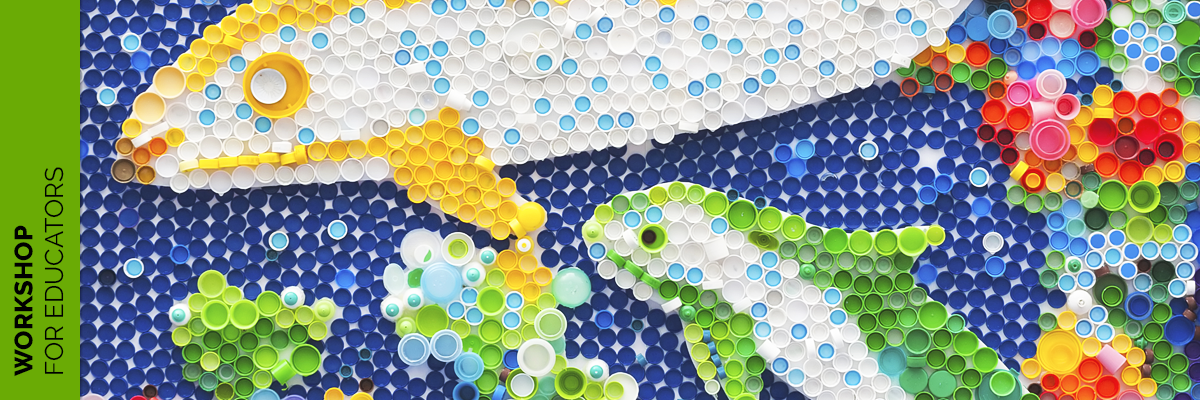Casting from Environments: Art as Knowledge
25jul10:00 am4:00 pmCasting from Environments: Art as KnowledgeEducator Workshop

Time
(Sunday) 10:00 am - 4:00 pm(GMT+10:00) View in my time
Location
TAFE QLD Southbank Campus
66 Ernest Street, South Brisbane, QLD, 4101
Event Details
This workshop connects with the Queensland Senior Visual Arts Curriculum Unit: Art as Knowledge. Educators will gain first hand experience in creating work to respond to a stimulus –
Event Details
This workshop connects with the Queensland Senior Visual Arts Curriculum Unit: Art as Knowledge. Educators will gain first hand experience in creating work to respond to a stimulus – forms or domestic objects, a knowledge of different casting environments and materials, and experimentation through an artistic process.
In this workshop Simone Eisler will provide an overview of her practice and the vast array of materials she uses for her work. She will explain the forms created and how they began as plaster bandage casts are then joined together to create new forms. Using objects you bring as well as a selection of unusual forms we’ll bring, you will go through the process of making forms in this way and explore to the endless possibilities of this medium and technique.
For schools, plaster bandage is a readily available low-cost material that has a variety of uses across sculpture and art making. It’s quick drying and able to be formed over a variety of objects to create casts or moulds of part of the original form. In addition, several casts or moulds can be joined together to create brand new forms. Once left to dry overnight, the resulting forms can be embellished with other materials.
Plaster bandage casting can take place anywhere, from the classroom table setting to a workshop space and even in the bush. All that’s needed is al-foil to cover the form you are covering the plaster bandage with, some tape, bowls, access to water and of course lots of plaster bandage cut into strips.
At the end of the workshop you’ll walk away with:
- An understanding of how to cast a form from a domestic or found object
- A knowledge of different environments you can cast objects from
- Techniques on how to create new forms by joining pieces with screws and bolts
- Ideas of how to further embellish the form at a later stage once it’s totally dry
Participants to Bring:
- Objects to use as stimulus that you can make simple moulds of. We are making a cast of ‘half’ of the object. Basically all kinds of objects are suitable if they have a surface area from which a layer of plaster bandage can be laid onto – and lifted off. (e.g. covering the underside of a salad bowl and lifting it straight off once dry). Not too many undercuts or the ‘cast’ will get stuck. However sometimes just part of an object that has undercuts can be covered and that’s fine.
- Suitable items include domestic plates and other household items including bowls, organic forms such as gourds or large shells, doll faces, jelly moulds etc.
- Old magazines/paper for collage into the forms, feathers, drawing media to use on plaster forms – charcoal, pen, ink, paint, lace or fabric /bibs and bobs you might want to glue into your form
- Sketchbook / notebook
- An apron – it gets messy!
- Thin rubber gloves if you have concerns about plaster and your skin
- A dust mask if you have concerns about plaster dust
- Lunch or snacks – there are several food establishments within walking distance of the venue if preferred. (tea, coffee and biscuits for morning and afternoon tea will be provided)
- Participants must wear enclosed shoes
Additional Information
Facilitator
Simone Eisler
Simone Eisler’s cross-disciplinary practice explores the relationship between the human body and nature, particularly the concepts of physical transformation, species evolution and biodiversity. She pushes this scientific investigation further into the realm of both mythology and futurist thinking, with a focus on interrogating presentation methodologies.
Eisler’s practice consists of installation, photography or sculpture. Within each of these areas she introduces materials from the animal world. In particular, her imaginary sculptural forms rework the materials in different ways either by re-skinning, casting or fracturing and reconfiguring elements. During the last three years she has been working extensively with plaster bandage as a means of casting forms, which she later embellishes with a variety of materials.
She runs numerous workshops for educators, artists and schools with a focus on mixed media, environmental art and sculptural form.
